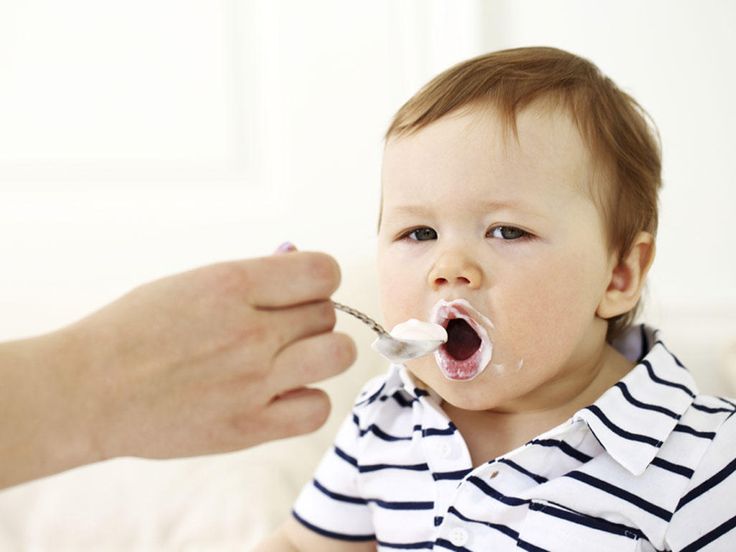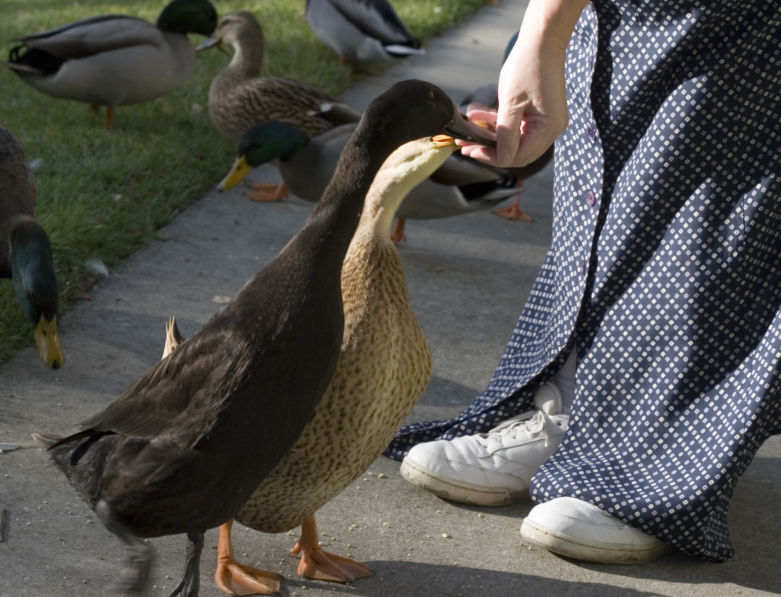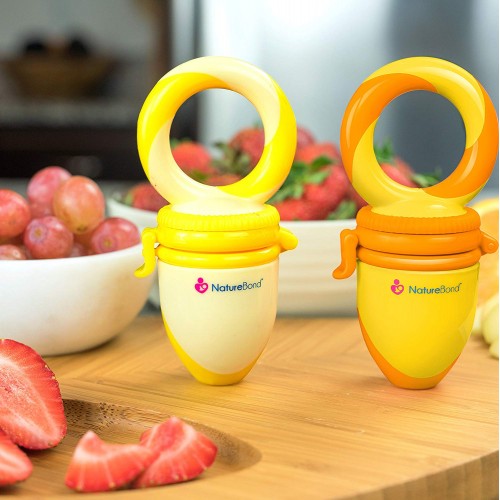Baby massaging breast while feeding
Why Does My Baby Knead Me While Breastfeeding? Science Explains
Life
poplasen/Fotolia
by Cat Bowen
I began breastfeeding my daughter in just a matter of minutes after she was born. The nurse set her on my bare chest, and quickly, she found gold. She rewarded me by punching my breasts. I can't be the only one to wonder, why does my baby knead me while breastfeeding?
Not surprisingly, this is not the most comfortable thing in the world. Who knew a tiny baby's fists could hurt like that? But, when your breasts feel as though they're a mere 10 milliliters from splitting at the sides like an overfilled pastry, those baby fists may as well be Balboa fists. It's not always painful — sometimes it's just funny. They get such a concentrated look on their little scrunchy faces while they speed bag your boobs like they've been personally affronted by the mammary glands.
Lindsay Greenfield, International Board Certified Lactation Consultant (IBCLC) tells Romper that your baby kneading your breasts is a way to stimulate milk production in the mother. Greenfield also notes that their little fists help them guide themselves to the nipple to latch — and science is there to back that up.
Tera Hamann, IBCLC points moms to a video from the World Health Organization (WHO) that shows a baby crawling across the bare chest of a mom just moments after birth, because that baby knew what's up. According to the WHO, there are chemicals on the nipple and coming from the milk that lay just beneath that are like a siren's call to newborns, because it smells like the amniotic sac.
In their article "Facilitating Autonomous Infant Hand Use During Breastfeeding," scientists Catherine Watson Genna, IBCLC and Diklah Barak wrote that it is actually an important stage of development for the newborn. They found that babies who are not swaddled and allowed to root on their own, using their hands, are more likely to self-latch than babies who are bound in cloth or discouraged from using their hands while nursing.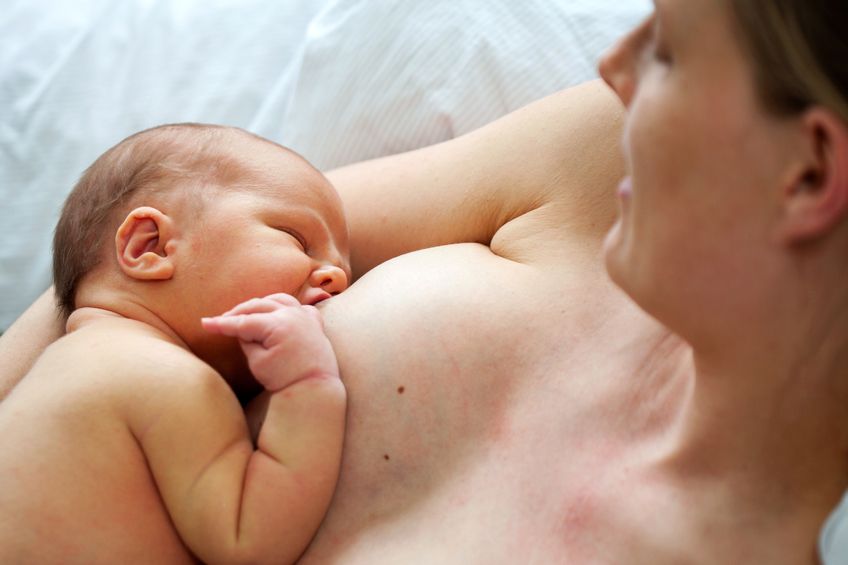
They noted that this kneading motion also increases the level of oxytocin in the mother, stimulating production, allowing for easier let-downs of milk, and that it also has the added benefit of making the areola pucker, projecting the nipple into a better shape for breastfeeding.
So while it may be uncomfortable at times, an article in Early Human Development, found that this is a normal, primitive neonatal reflex that can be witnessed across the world in every corner of new motherhood, and should not be discouraged as it is beneficial for successful feeding, however peculiar it may seem.
I know it looks like a cat kneading at your leg or a blanket, but Hamann tells Romper that if you think about it, humans are, after all, mammals, so it makes sense that there are similar behaviors. Maybe be grateful that baby doesn't have claws? (Who am I kidding, baby nails basically are claws.)
Benefits Of Breast Massage While Breastfeeding
So you have recently created a tiny human. Go you!
Go you!
As you're probably aware, breastfeeding can be one of the most beautiful parts of life with a new baby. It offers precious time to bond with your little one in those early months after pregnancy, as well as providing important nutrition as they grow and develop.
Unfortunately, breastfeeding is not always easy. Breastfeeding problems are normal, so you're not alone if you're finding it tough.
It can be time-consuming and even frustrating for many new mums, especially if your milk supply isn't keeping up with your little one's growing appetite (or you're suffering from the dreaded mastitis).
In fact, one US study found evidence that 12 per cent of early postpartum mothers experienced "disrupted lactation" resulting in early weaning. Luckily, evidence tells us that most mums can produce enough breastmilk with the appropriate support. And, breast massage can be a game-changer when it comes to improving milk supply.
If you're looking to add breast massage into your feeding routine, we've got you covered. Read on for all the information you need to be using lactation massage like a pro in no time.
Read on for all the information you need to be using lactation massage like a pro in no time.
Deep tissue massage while breastfeeding
Getting the hang of breastfeeding can be tricky enough, without the added stress when things don't exactly go to plan. Undersupply is one of the most common issues, but it doesn't have to be.
According to the Royal Women's Hospital, breast milk supply can usually be improved through breastfeeding more frequently, getting as much skin-to-skin contact as possible, switching breasts while feeding, making sure the baby is attaching properly, and, of course, breast massage.
So what actually is lactation massage? The concept is pretty simple and safe to try yourself at home, as long as you don't experience any increase in breast pain. There are many benefits of massage, from aiding the let-down reflex (the hormonal reaction that causes milk to flow) to offering treatment for breast pain after nursing.
It may take some time to find the type and intensity of massage that works for you, but sticking with it can make a huge difference to your breastfeeding journey.
As always, we recommend getting in touch with your healthcare provider with any concerns that arise during the breastfeeding or massage process. Most breastfeeding mums can resolve issues at home, but it's always a good idea to reach out for advice. After all, your breasts deserve the best!
Can breast massage increase milk supply?
In your early weeks together, you and bub will have likely settled into a pattern when it comes to the frequency and duration of nursing. However, sometimes it may seem like you aren't producing enough breast milk to keep up with his growing appetite. (You could also be producing too much milk, which can lead to other issues that we'll tackle later on.) This is where breast massage can help.
If you find yourself running out of milk before your little one is satisfied, the easiest solution may come as a surprise.
To increase milk supply, new mums should actually attempt to feed more often than usual. This will send signals to your body via your nerves and hormones to increase milk production and eventually create a new status quo of supply and demand. During the adjustment process, there is evidence that lactation massage can reduce pain and increase milk supply.
During the adjustment process, there is evidence that lactation massage can reduce pain and increase milk supply.
While we are all familiar with the benefits of massage for standard sore muscles after a particularly intense workout, breast massage involves specific techniques formulated to stimulate milk production and make both you and your baby more comfortable.
What are the benefits of breast massage?
Therapeutic breast massage is used in different forms all over the world, resulting in less pain, fewer blockages and higher milk production. The Oketani technique, for example, was developed in Japan and is a well-known treatment involving heat application and gentle massage.
A recent study suggested that lactation massage can reduce oversupply, relieving pain caused by breast engorgement, milk ducts and mastitis. Rather than making your body produce more or less milk, breast massage simply strengthens the natural feedback loop that regulates supply.
Plus, lactation massage is a low-risk process that can help you to connect with your body and your baby while nursing, resulting in a more enjoyable breastfeeding experience for you both.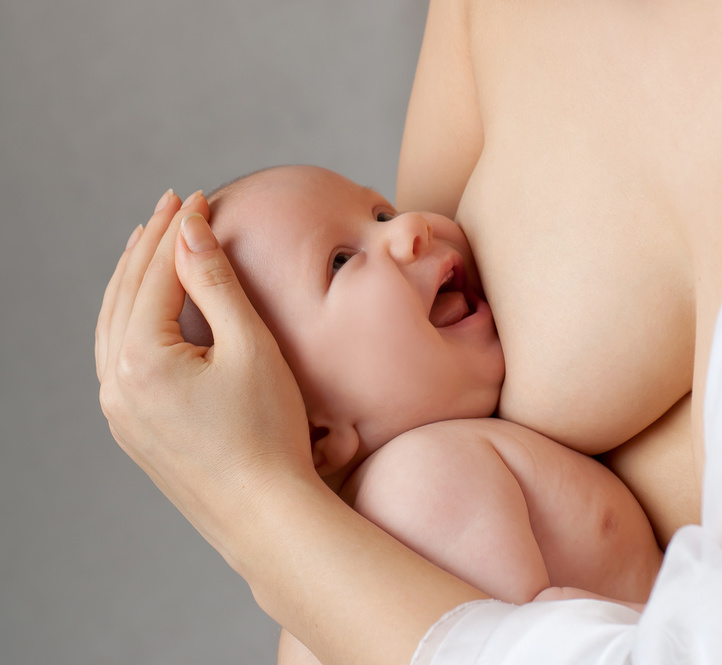
That's what we call a win-win situation!
How to hand massage breast for lactation
There are lots of different ways to perform lactation massage for breastfeeding. The main aim is to stimulate the breast tissue, so you can experiment to find what works for you. A massage tool can help in many cases, providing consistent yet targeted pressure. Massage can help with both over-and under-production of breast milk, as it encourages your body to become more attuned with your baby's feeding routine.
The Australian Breastfeeding Association recommends taking off your bra completely before you begin breastfeeding, whether you're planning to perform breast massage or not.
When you're relaxed, start to massage the breast towards the nipple on all sides as your baby feeds. Light strokes are the key here, making sure not to disturb your little one's attachment to the nipple.
Another lactation massage technique involves alternating a gentle circular motion, tapping with your fingertips and kneading with your fists all over the breast, areola and up towards the armpit. This can be performed while the baby is feeding or you can use hand expression during the process to stimulate more milk. Either way, you should notice more milk flowing as you massage.
This can be performed while the baby is feeding or you can use hand expression during the process to stimulate more milk. Either way, you should notice more milk flowing as you massage.
If you are finding that you regularly experience dry skin around the nipple after breastfeeding, a little olive oil applied directly to the skin can help. Almond oil is another great option, as both are safe and effective for breastfeeding mothers.
The Journal of Human Lactation suggests performing this breast massage for 30 to 45 minutes on each breast, but even 10 minutes is better than nothing.
Breast massage can be performed using your hands or a massage tool. If you ask us, the Lactamo Lactation Massager is a handy addition to any mum's breastfeeding massage bag of tricks. The little tool takes the pressure off your fingers and wrists and gives you the ability to perform warm and cool massages if necessary.
With a medical-grade silicone exterior and a non-toxic gel interior, the Lactation Massager can be used before, during or after breastfeeding. It is versatile and packs a punch, offering treatment for plugged ducts, low breastmilk supply and general swelling.
It is versatile and packs a punch, offering treatment for plugged ducts, low breastmilk supply and general swelling.
How to massage out lumps while breastfeeding
While massaging, you may come across a painful area in your breast. This is a common occurrence for breastfeeding mums and can cause an added level of discomfort. If you notice a sensitive lump in your breast, it could be a blocked milk duct. Breast massage can assist in breaking up these clogged ducts.
First, take a hot shower or use a heat pack on the affected area of your breast to increase the effectiveness of the massage. Then, start your baby off on the affected breast and gently massage the lump towards the nipple.
If you're using The Lactation Massager, try immersing it in boiling water for up to three minutes beforehand. If you can roll it in your palms comfortably for ten seconds, it should be at a safe temperature to use on your breasts.
The heat will help stimulate milk production and unclog ducts. You can also try hand expressing to clear clogged ducts. Afterwards, an ice pack (or the Lactation Massager straight from the freezer) can help with pain and any residual swelling around the nipples.
You can also try hand expressing to clear clogged ducts. Afterwards, an ice pack (or the Lactation Massager straight from the freezer) can help with pain and any residual swelling around the nipples.
If the lump hangs around for longer than 24 hours or you start to feel sick, you should see a doctor as this may be a sign your plugged ducts have developed into mastitis. Even if you're worried about mastitis, it is still safe and even recommended to keep nursing to help your breasts heal.
Does the Lactation Massager actually work?
Created in Australia to solve an age-old set of breastfeeding problems, The Lactation Massager is a beneficial tool for both new mums and seasoned experts. It makes lactation massage easy and assists in reducing engorgement, clearing clogged milk ducts and preventing mastitis.
After the amazing changes our bodies go through during pregnancy, the last thing you need is sore breasts.
Every breast is different, which is why The Lactation Massager is designed to be versatile enough to accompany you throughout all the stages of your breastfeeding journey.
Whether you're looking to increase supply or simply relieve discomfort, lactation massage can help you get the hang of breastfeeding, as well as make sure you can continue nursing for as long as feels right for you and bub.
Photo credit: Kin / Unsplash
Breastfeeding and the mother-child bond | Newborn Care
You've been imagining meeting your baby for months, and finally it's happened. The first weeks of breastfeeding are a special time when you get to know each other and forge an emotional connection.
Share this information
After the birth of a baby, all-consuming love and the desire to protect him can literally overwhelm you. However, an emotional connection is an individual experience, so don't worry if it doesn't happen right away. It takes time to get to know a child well. The emotional bond between parents and baby develops and strengthens in the process of caring for him.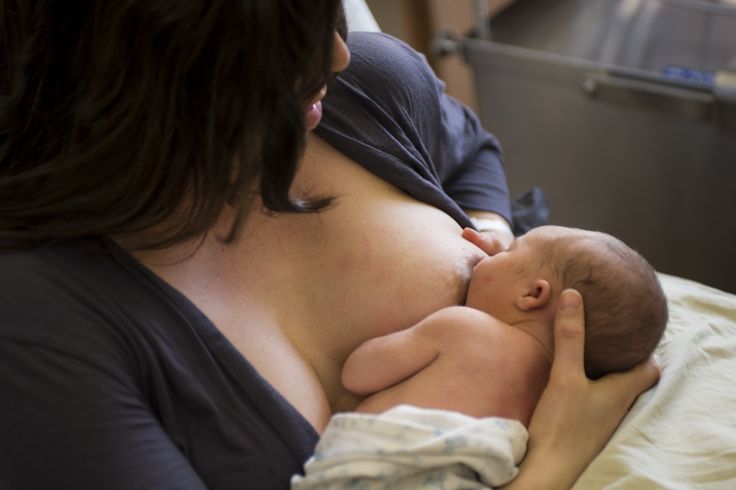
For both parents, the most important thing is to get used to caring for a child: to be near him, to talk, to take him in his arms, to cuddle him. This increases your confidence in your parenting abilities, creates the best emotional, physical and psychological conditions for your baby, and also contributes to successful breastfeeding.
Skin-to-skin contact with your baby
You've probably heard how important skin-to-skin contact is when you cuddle a diaper-only baby against your bare chest (if it's cool, you can put a sweater or light blanket over the top). Early skin-to-skin contact, preferably within the first hour after birth, releases hormones that encourage the baby to find the breast and start suckling. 1 One study found that newborns who spent more than 50 minutes in skin-to-skin contact were eight times more likely to suckle spontaneously. 2 However, skin-to-skin contact is not only important in the first hour of life. This is a great way to calm the baby in any situation.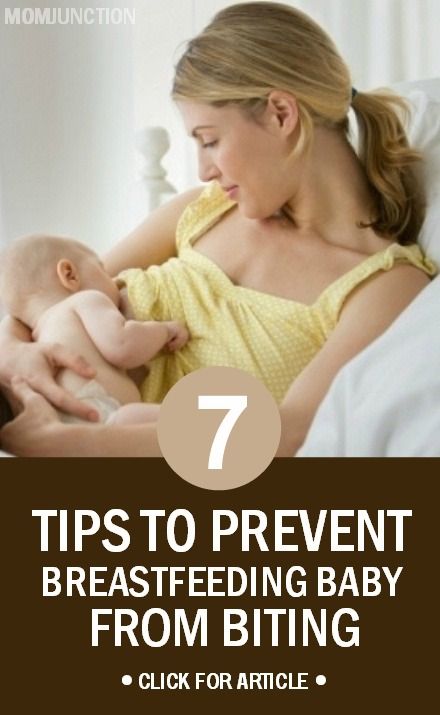 In addition, it stimulates milk production.
In addition, it stimulates milk production.
Skin to skin contact is good for the baby in many other ways. It normalizes the heartbeat and breathing, helps maintain optimal body temperature and healthy blood sugar levels. 3 If, for any reason, you are unable to hold your baby immediately after birth, skin-to-skin contact can be provided by your partner so that the baby can experience all the benefits listed, feeling safe, loved and warm.
Oxytocin: a prerequisite for breastfeeding and forming an emotional bond
Adjusting to your new role as a mother can be difficult, but precious moments in direct contact with your baby have a beneficial effect not only on him, but also on you.
Skin-to-skin contact in the mother's body creates a powerful calming hormonal cocktail, one of the main ingredients of which is oxytocin, the hormone of love and hugs. Oxytocin is produced with every contact with a newborn, and even when you just think about the baby or smell him. This smart hormone helps you adapt to motherhood. It stimulates "maternal behavior" - the desire to caress the child, look into his eyes and talk to him gently. 4
This smart hormone helps you adapt to motherhood. It stimulates "maternal behavior" - the desire to caress the child, look into his eyes and talk to him gently. 4
In addition, oxytocin fights feelings of anxiety and depression, thereby protecting you from postpartum depression. 5 It is also believed that the release of oxytocin shortly after birth prepares the brain for breastfeeding and stimulates milk production. 6
In addition, the mother produces beta-endorphin, a hormone that encourages her to respond to the needs of the child. Don't be surprised by the all-consuming desire to comfort a crying baby - this is a natural maternal instinct. In addition, beta-endorphin creates a feeling of pleasure and calmness. 3
What a newborn looks like
You will probably think your baby is the most beautiful creature in the world, but in fact, newborns usually look bruised and wrinkled, and sometimes even bruised or have a pointed skull, especially if forceps were used during birth or vacuum to extract the fetus.
In addition, the body of a newborn may be covered with so-called "stork bites" or "angel kisses" - red spots that disappear after a few months. The hands and feet of a newborn may have a bluish tint. All this is absolutely normal.
After a few days, the skin will smooth out, the head will become more round, and the primordial lubrication (cheesy white substance that protected the baby's skin in the womb) will disappear. There is no need to rinse off the lubricant - it is a natural moisturizer.
For the first few days, only the baby's head, buttocks and genitals should be washed (unless, of course, he has been soiled from head to toe with the contents of the diaper!). Bathing the whole baby is not required.
Washing your baby can be a great way for your partner to bond emotionally with the baby and take part in the care of the baby if the baby is fully breastfed. The rest of the baby's umbilical cord usually falls off within a couple of weeks. It does not look very pretty, but the main thing is to keep it clean and dry - then everything will be in order.
Making eye contact with the baby
Newborns can only see black, white and gray
(the color spectrum expands by about three months), 7 and their eyes can focus on objects no further than 25 cm (9.8 inches). This is enough for the baby to see your face while feeding. He may even briefly make eye contact with you. In the early days, you will have to feed the baby very often, so you will have the opportunity to enjoy this visual intimacy several times a day.
Forming an emotional connection with the voice
Full-term babies have good hearing. The fetus reacts to sounds as early as the 19th week of pregnancy. 8 It has been proven that newborns prefer the voice of their mother 9 to all others and even recognize the melodies they heard while they were in the womb. 10
Talking quietly to your baby creates two-way communication, which is important for your child's social development in the future. 11 You can talk about guests, about the view from the window - about anything. Newborns are very grateful listeners.
11 You can talk about guests, about the view from the window - about anything. Newborns are very grateful listeners.
“Walking with Iris in the early days, I told her what I saw — trees, flowers, children playing,” recalls Anna, a mother from the UK.
Singing is another great way to form an emotional connection, 12 it doesn't matter if you have a voice. “While my daughter Leni was very young, I sang songs to her when I changed diapers,” says Charlotte, a mother from the UK, “Now she is 18 months old, and I still sing the same songs to her, usually at night. She loves it very much - familiar melodies calm her down.
The power of touch
Touch is very important for a child. Hugs, petting, rocking, and other caresses are a great way to soothe your baby and make him feel safe, 13 and stimulate the release of oxytocin. By the way, did you know that the baby has already developed a grasping reflex? Try touching his palms or stroking his feet and see what happens.
“While Vivienne and Marcus were babies, they liked having their feet massaged. Now I continue to do this before bed. I tried to take them in my arms as often as possible - it was a great way to establish an emotional connection with them, ”says Rachel, a mother from Australia.
Dee, a mother from South Africa, loved wearing her baby in a scarf sling. In her opinion, this not only allows you to establish an emotional connection with the child: “It helped us a lot to establish breastfeeding. Now my daughter is 17 months old, but she still loves it when I wear her in a sling.”
Attractive mother's scent
Newborns have a well-developed sense of smell, which plays a key role in establishing an emotional bond between mother and child. The newborn is attracted by the smell of the mother's breast. Scientists explain this by saying that Montgomery's glands (small bumps on the areola - dark areas of the skin around the nipples) secrete a secret that smells like amniotic fluid. 14
14
In addition, the baby recognizes the smell of the mother and can even smell her breast milk from that of another woman. 15 And when mother and baby hug and smell each other, oxytocin is released, which, as already mentioned, helps to establish an emotional connection and establish breastfeeding.
It is important to understand that all mothers and babies are different and it may take time for you to get used to each other. If you have any questions or concerns, please contact your healthcare provider for advice and assistance.
Literature
1 Klaus M. Mother and infant: early emotional ties. Pediatrics. 1998;102( E 1):1244-1246. - Klaus M., "Mother and child: the origin of emotional bonds". Pediatrix (Pediatrics). 1998;102(E1):1244-1246.
2 Gomez AP et al. Kangaroo method in delivery room for full-term babies. An Esp Pediatr. 1998;48(6):631-633. - Gomez A.P. et al., "Application of the Kangaroo Technique to Term Babies in the Delivery Room". An Esp Pediatr. 1998;48(6):631-633.
- Gomez A.P. et al., "Application of the Kangaroo Technique to Term Babies in the Delivery Room". An Esp Pediatr. 1998;48(6):631-633.
3 Crenshaw JT. Healthy birth practice #6: Keep mother and baby together—It’s best for mother, baby, and breastfeeding. J Perinat Educ . 2014;23(4):211-217. — Crenshaw, JT, "Physiological Birthing Practices #6: Mother and Baby Should Be Together - Better for Mother, Baby, and Breastfeeding." J Perinat Eduk (Perinatal education). 2014;23(4):211-217.
4 Britton JR et al. Breastfeeding, sensitivity, and attachment. Pediatrics. 2006;118(5): e 1436-1443. - Britton J.R. et al., Breastfeeding, Sensitivity and Attachment. Pediatrix (Pediatrics). 2006;118(5):e1436-1443.
5 Kim S et al. Oxytocin and postpartum depression: delivering on what's known and what's not. Brain Res . 2014;1580:219-232. - Kim S. et al., "Oxytocin and postpartum depression: what we know and what we don't know." Brain Res. 2014;1580:219-232.
Brain Res . 2014;1580:219-232. - Kim S. et al., "Oxytocin and postpartum depression: what we know and what we don't know." Brain Res. 2014;1580:219-232.
6 Uvänas-Moberg K, Prime DK. Oxytocin effects in mothers and infants during breastfeeding. Infant . 2013;9(6):201-206.- Uvenas-Moberg K., Prime D.K., "The effects of oxytocin on mother and child during breastfeeding." Infant. 2013;9(6):201-206.
7 Franklin A , Davies New evidence for infant color categories. Br J Dev Psychol. 2004;22(3):349-377. http://citeseerx.ist.psu.edu/viewdoc/download?doi=10.1.1.456.5409&rep=rep1&type=pdf - Franklin, A., Davis, I.R., "New Evidence for Color Perception in Infants ". Br J Dev Saikol. 2004;22(3):349-377.
8 Hepper PG The development of fetal hearing.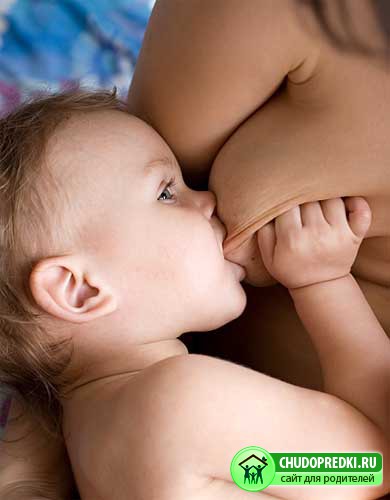 Arch DisChild. 1994;6(3): F 81-87. - Hepper P.J., Shahidullah B.S., "The Development of Hearing in the Prenatal Period". Arch Dis Child. 1994;6(3):F81-87.
Arch DisChild. 1994;6(3): F 81-87. - Hepper P.J., Shahidullah B.S., "The Development of Hearing in the Prenatal Period". Arch Dis Child. 1994;6(3):F81-87.
9 Lee GY, Kisilevsky BS. Fetuses respond to father's voice but prefer mother's voice after birth. DevPsychobiol. 2014;56(1):1-11. — Lee JI, Kisilewski BS, "Fetus responds to paternal voice but prefers mother's voice after birth." Dev Psychobiol. 2014;56(1):1-11.
10 Partanen E et al. Prenatal music exposure induces long-term neural effects. PLoS One . 2013;8(10): e 78946. - Partanen, I. et al., Prenatal music listening has long-term effects on the brain. PLOS One. 2013;8(10):e78946.
11 Kirk E et al. A longitudinal investigation of the relationship between maternal mind - mindedness and theory of mind. Br J Dev Psychol. 2015;33(4):434-445. — Kirk, I. et al., "Longitudinal study of the relationship between mother's orientation towards intelligence development and child's mental state model." Br Zh Dev Psychol. 2015;33(4):434-445.
Br J Dev Psychol. 2015;33(4):434-445. — Kirk, I. et al., "Longitudinal study of the relationship between mother's orientation towards intelligence development and child's mental state model." Br Zh Dev Psychol. 2015;33(4):434-445.
12 de l'Etoile SK. Infant behavioral responses to infant-directed singing and other maternal interactions. Infant Behav Dev . 2006;29(3):456-470. - de l'Etoile SK, "Infant behavioral response to singing and other interactions with the mother." Infante Behave Dev. 2006;29(3):456-470.
13 Moore ER et al. Early skin-to-skin contact for mothers and their healthy newborn infants. Cochrane Database Syst Rev . 2012;5(3). - Mur I.R. et al., "Early skin-to-skin contact and its impact on mothers and healthy newborns". Cochrane Database Syst Rev. Rev. 2012;5(3).
Rev. 2012;5(3).
14 Doucet S et al. The secretion of areolar (Montgomery's) glands from lactating women elicits selective, unconditional responses in neonates.PLoS One . 2009;4(10): e 7579. - Doucet S. et al., "Papillary gland secretion (Montgomery's glands) in lactating women induces a selective unconditioned response in the newborn." PLOS One. 2009;4(10):e7579.
15 Vaglio S. Chemical communication and mother-infant recognition. 2009;2(3):279-281. - Vaglio S., "Chemical Communication and Recognition in the Mother-Child Pair". Commune Integral Biol. 009;2(3):279-281.
Prejudices related to breastfeeding
Instead of an introduction, I would like to say that the ideas of modern women about breastfeeding are a collection of prejudices. They are so common that in many books for expectant mothers and in magazines for parents, it is actions based on prejudice that are described as correct and necessary.
“Breastfeeding is something incredibly difficult, almost no one is able to feed for a long time, everyone always has a lot of problems and one sheer inconvenience”
There is nothing easier, more comfortable, more enjoyable for mother and baby, and, by the way, cheaper than properly organized breastfeeding. But for that to be the case, breastfeeding needs to be learned. The best teacher in this matter may not be a book or a magazine for parents, but a woman who has been breastfeeding her child for a long time, more than a year, and receiving positive emotions from this. There are women who breastfeed for a long time and perceived it as a punishment. For example, one mother fed a child for 1.5 years and for all these 1.5 years she pumped after each feeding, and when she decided that she was enough and decided to wean the child, she had mastitis due to wrong actions. Now she tells everyone that breastfeeding is hell. She didn't feed her baby properly for a single day.
"Breastfeeding spoils the shape of the breast"
It is true that breastfeeding does not improve the shape of the breast, but the breast changes during pregnancy. It is then that it increases and becomes heavier, and, if its shape contributes to this, it “sags”.
It is then that it increases and becomes heavier, and, if its shape contributes to this, it “sags”.
Breast changes during lactation. Approximately 1-1.5 months after birth, with stable lactation, it becomes soft, produces milk almost only when the baby suckles. After the end of breastfeeding, 1.5-3 or more years after the birth of the baby, involution of the mammary gland occurs, lactation stops. Iron "falls asleep" until the next time. Under natural conditions, the end of breastfeeding always coincides with a decrease in the baby's need for breastfeeding. The chest remains soft, inelastic. The shape of the breast largely depends on the presence of adipose tissue in it, the amount of which decreases during prolonged breastfeeding. After the end of breastfeeding, adipose tissue is gradually restored. If a woman does not feed a child, the involution of the mammary gland occurs within the first month after childbirth. The shape of the breast still does not return to its pre-pregnancy state. And if you think about it and figure out why a woman has breasts at all? It's for breastfeeding.
And if you think about it and figure out why a woman has breasts at all? It's for breastfeeding.
"Breastfeeding spoils the figure"
Many women are afraid to gain weight while breastfeeding. But usually a woman gains weight mainly during pregnancy, and not when she is nursing. Moreover, if before pregnancy she tried to meet certain fashionable standards, for example, 90-60-90, during pregnancy she returns to her weight, her genetically incorporated physiological norm (and it may be far from fashionable standards) + the well-known 7-10kg per uterus, fetus, amniotic fluid, increased volume of circulating blood and a little bit more for various little things. Weight gain during pregnancy can be significant. Many women begin to lose weight after 6-8 months of feeding, and gradually, in the second, third year of feeding, she “drops” everything that she has accumulated. It turns out that the figure from breastfeeding often just improves.
Very often it turns out that a woman, having stopped breastfeeding 1. 5-2 months after giving birth, begins to gain weight. Perhaps this is due to the resulting hormonal imbalance, tk. no woman is designed for such a rapid cessation of lactation.
5-2 months after giving birth, begins to gain weight. Perhaps this is due to the resulting hormonal imbalance, tk. no woman is designed for such a rapid cessation of lactation.
"You have to prepare the breast for feeding." And then various recommendations follow, from sewing hard rags into the bra to advice to the husband at the end of pregnancy to “dissolve the ducts” of his wife
There is no need to prepare the breast for feeding, it is so arranged by nature that by the time of birth it is quite ready to feed the child. Cloths, for example, can cause skin irritation. Any manipulation of the nipple at the end of pregnancy can lead to very undesirable consequences due to the stimulation of the oxytocin reflex: stimulation of the nipple - release of oxytocin - contraction of the muscles of the uterus under the influence of oxytocin - the uterus is "in good shape" - and, as the worst option, stimulation of premature labor. And in general, has anyone seen a cat with a rag in a bra, or a monkey doing a hardening shower massage?
“With a flat, let alone inverted nipple, breastfeeding is impossible”
Strange as it may seem to people who have never breastfed, a baby's nipple is just a point from which milk flows. If the child sucks in the correct position, then the nipple is located at the level of the soft palate and does not participate in the actual sucking. The child sucks not the nipple, but the areola, massaging, decanting it with the tongue. A breast with a flat or inverted nipple is difficult for a baby to hold in his mouth while suckling and it is more difficult for him to suck on it. Mom should show patience and perseverance in the first days after the birth of a child. Any child is perfectly trained to suck even the most uncomfortable, from our point of view, breast.
If the child sucks in the correct position, then the nipple is located at the level of the soft palate and does not participate in the actual sucking. The child sucks not the nipple, but the areola, massaging, decanting it with the tongue. A breast with a flat or inverted nipple is difficult for a baby to hold in his mouth while suckling and it is more difficult for him to suck on it. Mom should show patience and perseverance in the first days after the birth of a child. Any child is perfectly trained to suck even the most uncomfortable, from our point of view, breast.
The nipple changes shape during sucking, stretches and takes on a more comfortable shape for the baby, usually in 3-4 weeks. There are also various devices called "nipple formers". They are put on immediately after feeding, when the nipple is slightly extended by the efforts of the child and worn until the next application. The nipple formers hold the nipple in an extended position. But even without these things it is quite possible to do.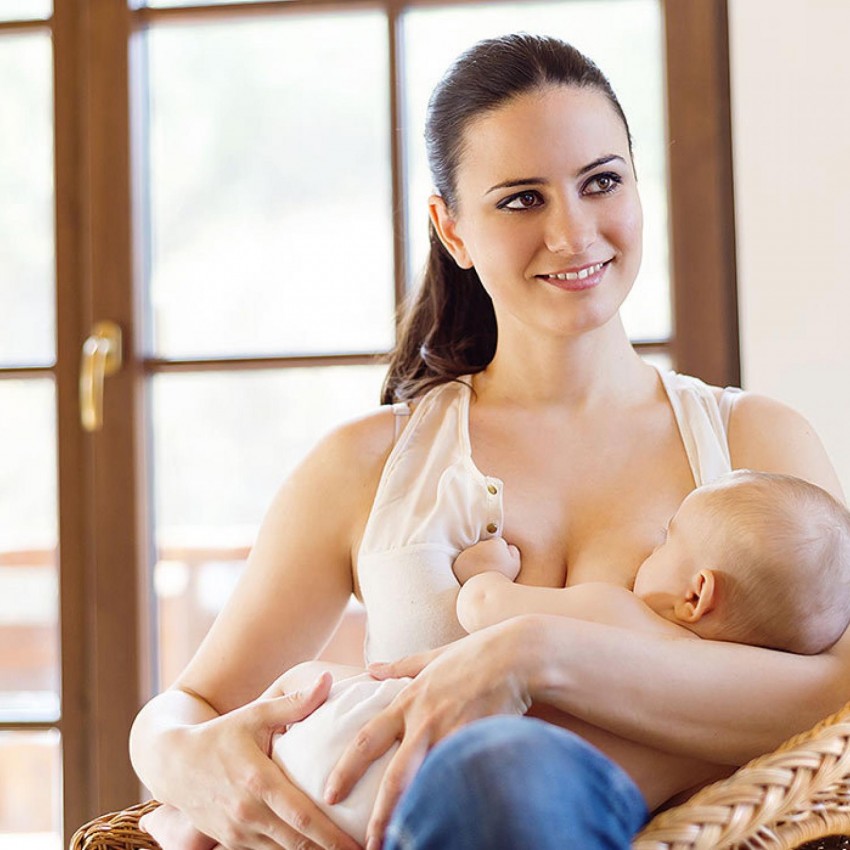
It is very important for a mother with flat or inverted nipples to ensure that her baby never suckles anything but her mother's breast after birth. The child of such a mother, having sucked on a bottle or a pacifier, quickly realizes that this is a more convenient object for sucking and begins to refuse the breast. In this situation, mom will need even more patience and perseverance.
"You can't keep a newborn at the breast for more than 5 minutes, otherwise there will be cracks"
The child should be kept at the breast for as long as he needs. Feeding ends when the baby himself releases the breast.
If we talk about cracks, then there are only three groups of causes that lead to their formation
- Mother washes her breasts before each feeding. If she does this (and even with soap, and even anoints with brilliant green after feeding - a favorite pastime in Russian maternity hospitals, for example) - she constantly washes off the protective layer from the areola, which is produced by special glands located around the nipple, and dries the skin.
 This protective lubricant exists just to prevent the loss of moisture in the delicate skin of the nipple, it has bactericidal properties and inhibits the growth of pathogenic microorganisms and, which is especially important for the child, smells about the same as amniotic fluid. The sensitive skin of some women cannot tolerate such exposure for a long time and begins to crack, even with proper attachment of the baby.
This protective lubricant exists just to prevent the loss of moisture in the delicate skin of the nipple, it has bactericidal properties and inhibits the growth of pathogenic microorganisms and, which is especially important for the child, smells about the same as amniotic fluid. The sensitive skin of some women cannot tolerate such exposure for a long time and begins to crack, even with proper attachment of the baby. -
Causes related to the incorrect position and behavior of the baby at the breast: the baby is not properly attached and sucks in the wrong position. And if this is true, then 5 minutes after 3 hours is enough for the formation of abrasions, and then cracks. The baby may latch on correctly, but in the process of suckling, he may perform various actions that can lead to cracking if the mother does not know that these actions need to be corrected and not allowed to behave like this. It must be remembered that the child has not suckled before, and does not know how to do it (he knows only the general principle of sucking).
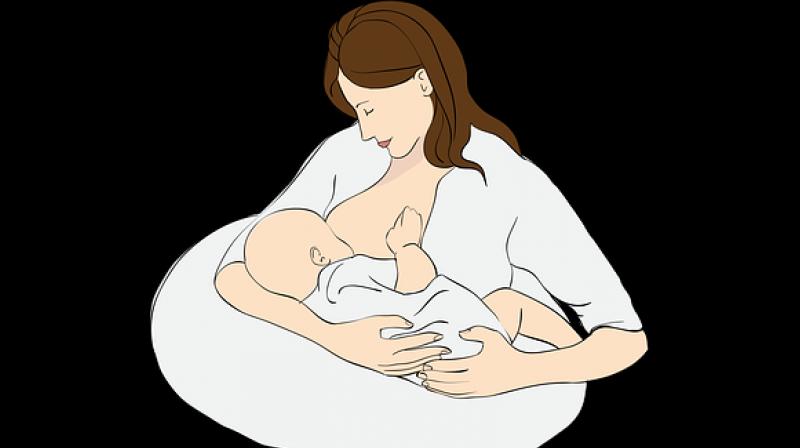 Unfortunately, most mothers also do not know how a baby should behave at the breast; they have never, or almost never seen it. What shouldn't a child be allowed to do? "Move out" to the tip of the nipple. This happens especially often if, during sucking, the child does not stick his nose into his mother's breast. If the mother feels that the grip is changing, she should try to press the baby with her nose to her chest. Very often this is enough for the child to “put on” correctly.
Unfortunately, most mothers also do not know how a baby should behave at the breast; they have never, or almost never seen it. What shouldn't a child be allowed to do? "Move out" to the tip of the nipple. This happens especially often if, during sucking, the child does not stick his nose into his mother's breast. If the mother feels that the grip is changing, she should try to press the baby with her nose to her chest. Very often this is enough for the child to “put on” correctly.
If this does not help, the nipple must be removed and re-inserted correctly. The baby should not suckle the breast incorrectly for a single minute. He doesn’t care how to suck, he doesn’t know that he hurts his mother, he doesn’t know that the wrong position does not allow him to suck out enough milk, he doesn’t know that with the wrong position there is not enough stimulation of his mother’s breast and there will not be enough milk production. You can not let the child play with the nipple. A child who has learned to slide down on the tip of the nipple sometimes begins to pass the nipple back and forth through the parted jaws. Mom, of course, it hurts or is unpleasant, but in most cases, mothers allow this to be done “If only he sucked ...” they say ... Why? It often happens that children who do not feel the touch of the breast with their nose during sucking, or do not feel it very well, begin to make search movements with the nipple in their mouth. Here you need to gently press the baby to your chest so that he understands that he is already in place and there is nothing more to look for. Sometimes, especially if the mother has long and large nipples, the baby grabs the breast in several steps, “climbing” up in several movements. This also happens in cases where the child has already sucked on the pacifier and does not open his mouth well. The nipple is injured so very quickly. To avoid this, it is necessary to properly insert the nipple into the wide-open mouth, bringing the nipple itself past the jaws, as deep as possible.
A child who has learned to slide down on the tip of the nipple sometimes begins to pass the nipple back and forth through the parted jaws. Mom, of course, it hurts or is unpleasant, but in most cases, mothers allow this to be done “If only he sucked ...” they say ... Why? It often happens that children who do not feel the touch of the breast with their nose during sucking, or do not feel it very well, begin to make search movements with the nipple in their mouth. Here you need to gently press the baby to your chest so that he understands that he is already in place and there is nothing more to look for. Sometimes, especially if the mother has long and large nipples, the baby grabs the breast in several steps, “climbing” up in several movements. This also happens in cases where the child has already sucked on the pacifier and does not open his mouth well. The nipple is injured so very quickly. To avoid this, it is necessary to properly insert the nipple into the wide-open mouth, bringing the nipple itself past the jaws, as deep as possible. Moms don't know how to breastfeed properly.
Moms don't know how to breastfeed properly.
A typical picture for maternity hospitals with separate stay is as follows: a baby was brought to the mother for 30 minutes, the baby held everything correctly and sucked well for these 30 minutes, he would still suck, but they came to pick him up and the mother pulls (slowly or quickly) his nipple from mouth. Six such pulls per day is enough for the development of abrasions. You can take the nipple only after opening the jaw with the little finger (quickly insert the tip of the finger into the corner of the mouth and turn it - it does not hurt at all and no one suffers).
Diseases of the skin of the nipples. Most often, mothers are faced with a fungal infection of the skin of the nipples - "thrush". In this situation, the skin most often looks "irritated", it can peel off, itch, cracks may appear, even despite proper application, there may be pain during and after sucking, piercing pains along the milk ducts. This problem is usually solved with the use of specific treatment and also has nothing to do with the topic of preparing the breast for feeding or the time the baby is at the breast.
“While there is no milk, it is necessary to drink more water”
The first day after childbirth, liquid colostrum forms in the breast of a woman, on the second day it becomes thick, on 3-4 days transitional milk may appear, 7-10-18 days - milk become mature. Colostrum is scarce and thicker than milk. This is the main argument in most Russian maternity hospitals in favor of supplementing and feeding the child (otherwise he allegedly suffers from hunger and thirst).
If a child needed large volumes of liquid immediately after birth, then nature would arrange the woman in such a way that she would be flooded with colostrum immediately after childbirth. But the child does not need extra water at all. All he needs he gets from colostrum and milk! The water that is given to the child while the mother has colostrum literally “washes away” the colostrum from the gastrointestinal tract, depriving the baby of the action of colostrum necessary for him. Water is given from a bottle, which leads to "tangled nipples" in the baby and may lead to refusal of the breast. Water causes a false feeling of fullness and reduces the need for suckling in a child. If we give a child 100 g of water per day, he sucks 100 g less milk (this applies not only to a newborn). The kidneys of a newborn are not ready for a large load of water and begin to work with overload. The list of arguments against can be continued, but these are enough.
Water causes a false feeling of fullness and reduces the need for suckling in a child. If we give a child 100 g of water per day, he sucks 100 g less milk (this applies not only to a newborn). The kidneys of a newborn are not ready for a large load of water and begin to work with overload. The list of arguments against can be continued, but these are enough.
“While there is no milk, it is necessary to supplement the child with formula, otherwise he will lose weight, starve”
The child is not designed to receive anything other than colostrum and milk. In the first days after birth, one colostrum is enough for him. Weight loss in the first day of life is a physiological norm. Newborns lose up to 6-8% of their birth weight in the first two days of their lives. Most children regain their weight or begin to put on weight by 5-7 days of life. Supplementary feeding with a mixture in the first days of a child's life is nothing more than a gross interference in the functioning of the baby's body. You can call this intervention a metabolic catastrophe. But in most Russian maternity hospitals, this is completely ignored!
You can call this intervention a metabolic catastrophe. But in most Russian maternity hospitals, this is completely ignored!
In addition, the introduction of supplementary feeding is carried out through a bottle, which very quickly leads to "tangled nipples" and the baby refuses the breast. Sometimes one or two bottle feedings are enough to stop a baby from breastfeeding! The mixture causes a feeling of fullness, lingers in the stomach for a long time, the child has a reduced need to suckle the breast, which leads to a decrease in breast stimulation and a decrease in milk production.
“I feed my baby on demand! He demands from me in 3.5 hours!”
Feeding on demand means putting the baby to the breast for every disturbance or search. The baby needs breastfeeding around every sleep, he falls asleep at the breast and when he wakes up, he is given the breast. A newborn child in the first week of his life can indeed be applied relatively rarely - 7-8 times a day, but in the second week of life, the intervals between applications are always reduced. During wakefulness, the child can ask for a breast up to 4 times per hour, i.e. every 15 minutes! Usually a child fed on demand is applied in the first month of life 12 or more times a day, usually 16-20 times. If a child in the first months of life is applied less than 12 times, then the mother either does not notice his modest requests, or ignores them (meaning a healthy, physiologically mature child).
During wakefulness, the child can ask for a breast up to 4 times per hour, i.e. every 15 minutes! Usually a child fed on demand is applied in the first month of life 12 or more times a day, usually 16-20 times. If a child in the first months of life is applied less than 12 times, then the mother either does not notice his modest requests, or ignores them (meaning a healthy, physiologically mature child).
In the overwhelming majority of cases, at the moment when the child begins to ask for a breast more often, the mother decides that the child is starving and introduces supplementary feeding. And the child asks for breasts not at all because he is hungry. He constantly needs a sense of confirmation of physical contact with his mother. During his life in his mother's belly, he is very used to the following: warm, crowded, I hear my heart beating, my lungs breathe, my intestines growl, I smell and taste amniotic fluid (filling the baby's nose and mouth), almost all the time I suck a fist (studies suck).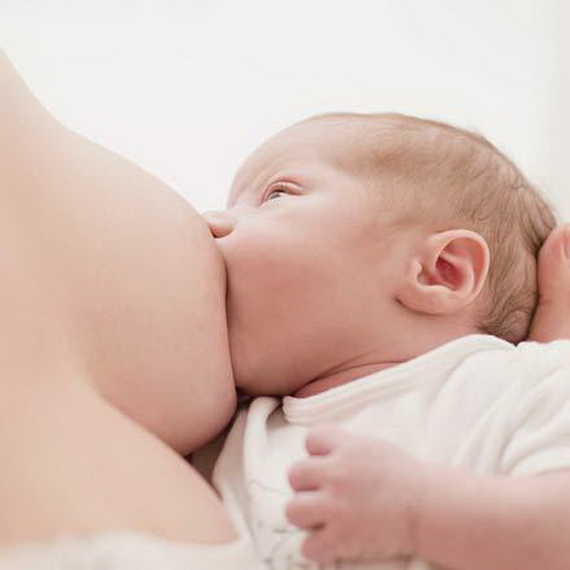 Only in these conditions the baby feels comfortable and safe. After childbirth, he can get into such conditions only if his mother takes him in her arms, puts him on her breast, and then he will again feel cramped, warm, he will hear familiar rhythms, start sucking and feel the familiar smell and taste (the smell and taste of milk are similar to the taste and smell of amniotic fluid). And a newborn child wants to get into such conditions as often as possible. And a modern mother is waiting, she can’t wait, when the intervals between feedings will increase, when will the child start eating in 3.5-4 hours, when will he stop waking up at night ??? Hurry!!! And, usually, to the timid attempts of the child to ask for a breast, he answers with a pacifier, a rattle, gives some water, talks, entertains. The child is most often applied to the breast only when he wakes up. And he quickly agrees with this position. The child always takes the mother's position. But here a “pitfall” awaits mother and baby - insufficient breast stimulation and, as a result, a decrease in the amount of milk.
Only in these conditions the baby feels comfortable and safe. After childbirth, he can get into such conditions only if his mother takes him in her arms, puts him on her breast, and then he will again feel cramped, warm, he will hear familiar rhythms, start sucking and feel the familiar smell and taste (the smell and taste of milk are similar to the taste and smell of amniotic fluid). And a newborn child wants to get into such conditions as often as possible. And a modern mother is waiting, she can’t wait, when the intervals between feedings will increase, when will the child start eating in 3.5-4 hours, when will he stop waking up at night ??? Hurry!!! And, usually, to the timid attempts of the child to ask for a breast, he answers with a pacifier, a rattle, gives some water, talks, entertains. The child is most often applied to the breast only when he wakes up. And he quickly agrees with this position. The child always takes the mother's position. But here a “pitfall” awaits mother and baby - insufficient breast stimulation and, as a result, a decrease in the amount of milk.
“Feeding on demand is a nightmare! It is impossible to sit and feed the child for days!”
That's what mothers who can't breastfeed say. With properly organized feeding, mom is resting! She lies, relaxed, hugs the baby, the baby sucks. What could be better? Most women cannot find a comfortable position, they sit, they hold the child awkwardly, their back or arm numbs, if they feed lying down, it usually “hangs” over the child on the elbow, the elbow and back become numb. Moreover, if the child does not take the breast well, it hurts the mother ... What kind of pleasure can we talk about here? In the first month - one and a half after childbirth, when the child is applied chaotically, without a pronounced regimen, sucks often and for a long time, the mother can feel good only if breastfeeding is organized correctly, it is convenient for the mother to feed, she knows how to do it standing, lying down and sitting, and even moving.
“After each feeding, you must express the rest of the milk, otherwise the milk will be wasted”
No, you do not need to express after each feeding if breastfeeding is properly organized. If you feed your baby 6 times a day and do not express, indeed, milk can disappear very quickly. If you express after each feeding, then you can support lactation for some time. The terms are different, but rarely it is more than six months, cases of feeding on such behavior for more than a year are isolated.
If you feed your baby 6 times a day and do not express, indeed, milk can disappear very quickly. If you express after each feeding, then you can support lactation for some time. The terms are different, but rarely it is more than six months, cases of feeding on such behavior for more than a year are isolated.
When feeding a baby on demand, the mother always has as much milk as the baby needs and there is no need to pump after each application. In order for the newborn to completely suck out the breast, it is applied to one breast for 2-3 hours, and to the other for the next 2-3 hours. Somewhere after 3 months, when the child is already applied relatively rarely, he may need a second breast in one attachment, then the next time he is applied to the one that was last.
There is one unpleasant “pitfall” in regular pumping after feeding, which even most doctors are not aware of. It's called lactase deficiency. When a mother expresses after a feed, she expresses just the “hind” fatty milk, which is relatively poor in milk sugar, lactose. She feeds the child mainly with the anterior portion, which accumulates in the breast between rare feedings. There is a lot of lactose in the anterior portion. The child is fed "only lactose", the gastrointestinal tract of the child after some time ceases to cope with such volumes of lactose. Lactase deficiency develops (Lactase is an enzyme that breaks down lactose - milk sugar, it begins to be missed). This is one of the reasons for the development of lactase deficiency; the second, for example, is this: the mother gives the child two breasts in one feeding. But about this separately.
She feeds the child mainly with the anterior portion, which accumulates in the breast between rare feedings. There is a lot of lactose in the anterior portion. The child is fed "only lactose", the gastrointestinal tract of the child after some time ceases to cope with such volumes of lactose. Lactase deficiency develops (Lactase is an enzyme that breaks down lactose - milk sugar, it begins to be missed). This is one of the reasons for the development of lactase deficiency; the second, for example, is this: the mother gives the child two breasts in one feeding. But about this separately.
“You should give your baby two breasts at one feeding.”
No, it is not necessary to give two breasts. A newborn baby can be applied for 1.5-3 hours to one breast. Then 1.5-3 hours to another (for example, the baby woke up, sucked a little and didn’t want to anymore, but after 30 minutes he wanted to suck a little more. After 20 minutes, he sucked longer and fell asleep; all these attachments were from one breast; when the baby wakes up, you can offer him another breast). We need this so that the baby sucks the breast to the end, and receives "front" and "hind" milk in a balanced amount. If the baby is transferred to the other breast in the middle of feeding, he will receive less fat-rich hind milk. He will suck mainly the front portion from one breast and add the same from the other. Foremilk is rich in lactose, and after a while the baby can no longer cope with the load of lactose. Lactose intolerance develops.
We need this so that the baby sucks the breast to the end, and receives "front" and "hind" milk in a balanced amount. If the baby is transferred to the other breast in the middle of feeding, he will receive less fat-rich hind milk. He will suck mainly the front portion from one breast and add the same from the other. Foremilk is rich in lactose, and after a while the baby can no longer cope with the load of lactose. Lactose intolerance develops.
Transferring a baby from one breast to another can cause hyperlactation in some women, and if the mother also expresses both breasts after each feeding ... There are such mothers. Curtailing excess milk is sometimes more difficult than adding missing ... In some cases, feeding at one feeding from two breasts is necessary to stimulate lactation when there is a shortage of milk. A growing baby, most often after 3-4 months, may need two breasts in one feeding. Then the next application begins with the breast that was last.
“The more liquid you drink, the more milk”
There are mothers who try to drink as much as possible, sometimes up to 5 liters of liquid per day. And a nursing mother should drink only as much as she wants. By thirst. Mom shouldn't be thirsty. And if water is drunk on purpose, and even more than 3-3.5 liters per day, lactation can begin to be suppressed.
And a nursing mother should drink only as much as she wants. By thirst. Mom shouldn't be thirsty. And if water is drunk on purpose, and even more than 3-3.5 liters per day, lactation can begin to be suppressed.
“Sucking the fist is very harmful”
The whole end of pregnancy the child sucked the fist, so he learned to suck. Fist sucking is one of the inborn habits of a newborn. After childbirth, the baby begins to suck on the fist as soon as it enters his mouth. At 3-4 months, the fist is the first thing that the baby can put into his mouth on his own. He can do things on his own!!! This is amazing! And at this age, many babies begin to actively suck their fingers and fists. There is nothing wrong with that. Mom only needs to watch the baby a little. If a baby plays with a fist, then he sucks, then he stops, he can not be distracted from this activity. If the baby begins to actively suck the fist, then the baby wants to suck for real, offer him a breast. If the need to suckle the baby is fully satisfied by the breast, then the baby stops sucking the fist by 5-6 months. (Then, at 6-7 months, he begins to “look for teeth”, but this is a completely different behavior). The cam baby sucks almost the same as the breast, opening its mouth wide. Some babies have a very funny behavior when, having stuck to the chest, the baby tries to put his fist in his mouth ...
(Then, at 6-7 months, he begins to “look for teeth”, but this is a completely different behavior). The cam baby sucks almost the same as the breast, opening its mouth wide. Some babies have a very funny behavior when, having stuck to the chest, the baby tries to put his fist in his mouth ...
"My baby needs a pacifier"
The baby is not designed by nature to suckle anything other than the breast (and the fist, in a pinch). A child is always taught to use a pacifier. There are children who immediately push out the pacifier with their tongue. And there are those who begin to suck it. There are mothers who hold the pacifier with their finger so that her child does not push it out. Usually, the first time a baby gets a dummy is when he showed concern and the mother does not know how to calm him down. To calm down, the child needs to suck on the breast, well, they didn’t give him a breast, they gave him something else, he will have to suck what they give ...
“A child often asks for breasts, which means that he is hungry, there is not enough milk for him”
As mentioned above, a newborn child asks to be breastfed often, not at all because he is hungry. He wants to suck, he wants to mom. He constantly needs confirmation of psycho-emotional and physical contact with his mother.
He wants to suck, he wants to mom. He constantly needs confirmation of psycho-emotional and physical contact with his mother.
“Sufficient milk or not, we will find out on control feeding”
We will not learn anything on control feeding (the child is weighed before and after feeding, the difference is calculated and find out how much he sucked for feeding). Because:
- A baby who feeds on demand constantly sucks different portions of milk. In one application 5 ml, in another - 50, in the third - 150. You can get 5 ml. (Once I weighed my daughter after 30 minutes of suckling. She gained 14 g. In the first month of her life, she gained 1200 g - and what would the district pediatrician tell me if this was control feeding in the clinic?)
- The newborn is designed to receive small portions of milk, but often. The vast majority of newborns in the conditions of feeding 6-7 times a day still suck out small portions of milk, and not 6 times 120 ml. And of course they don't eat.
 They start gaining poorly or stop gaining weight, or lose weight altogether.
They start gaining poorly or stop gaining weight, or lose weight altogether.
Whether or not enough milk is available can be determined in two ways:
Wet diaper test. (This is a test for wet diapers, not for used diapers, because you need to know exactly the number of urination). If a child older than 7 days pees more than 6-8 times a day, his urine is light, transparent, odorless, then he receives a sufficient amount of milk. Usually the child pees during wakefulness every 15-30 minutes. If a mother uses diapers, but wants to find out if there is enough milk or not, she needs to remove the diapers from the child for three hours. If the baby pees 3-4 times or more in three hours, then you can not count further. If you peed 3 times or less, we count for 6 hours. If in six hours he peed 4-5 times or more, you can not count further, if less than 4, we count further. And so on… Weekly weight gain (for a child older than 7 days) should be between 125 and 500 g.
“If applied frequently, the baby will suck everything out quickly, the breast is soft all the time – there is no milk. It is necessary to “save” milk for feeding”
It is necessary to “save” milk for feeding”
When feeding a child on demand, the breast becomes soft about a month after the start of feeding, when lactation becomes stable. Milk begins to be produced only when the baby suckles. The breast is never “empty”, in response to the sucking of the child, milk is constantly produced in it. If the mother is trying to fill her breasts for feeding, waiting for the breasts to “fill up”, she gradually reduces the amount of milk by such actions. The more mother attaches the child, the more milk, and not vice versa.
“The stomach needs to rest”
But the child's stomach doesn't work very well. Milk there only curdles and is quickly evacuated to the intestines, where the actual digestion and absorption takes place. This is the prejudice from the old song about feeding according to the schedule after 3 hours. The newborn does not have a clock. No mammal makes even intervals in feeding its newborns. The body of the child is adapted to the continuous flow of mother's milk, and he does not need to rest at all.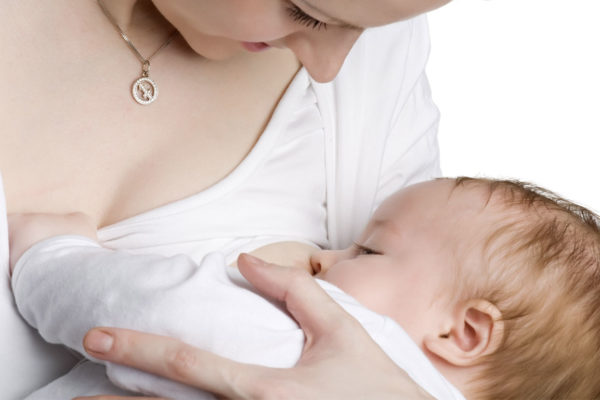
“After each feeding, keep the baby upright for 20 minutes”
Do not hold the baby upright after each feeding, especially if the baby has fallen asleep. Most of the time the baby lies on its side. If he burps a little, then the diaper just changes under his cheek. It is necessary to hold the artificial man vertically so that he does not spill the 120g poured into him. And we are talking about babies who are fed on demand and receive small portions of mother's milk. In addition, the cardiac sphincter of the stomach needs training, which it can only receive if the child is lying down.
“You need to sleep at night”
At night, you need to not only sleep, but suck your breast. Most newborn children are so arranged that they sleep from 10-11 pm to 3-4 am, then they begin to wake up and ask for breasts. In a child of the first month of life, applications in the morning hours (from 3 to 8) are usually 4-6. Night feedings with properly organized breastfeeding look something like this: the baby got worried, the mother put it to the breast, the baby sleeps sucking and the mother also sleeps, after a while he lets go of the breast and sleeps more soundly. And such episodes happen in a night 4-6. All this is easy to organize if the mother sleeps with her child, and for this she needs to be able to feed lying down in a comfortable position.
And such episodes happen in a night 4-6. All this is easy to organize if the mother sleeps with her child, and for this she needs to be able to feed lying down in a comfortable position.
If the baby sleeps separately from the mother, in his own bed, then he stops waking up for morning feedings, sometimes already a week after birth, sometimes by 1.5-2 months. Most modern mothers take this with relief, because. for them, finally, the night running back and forth, nodding while sitting in a chair or on a bed over a sucking child, and some also pumped at night ... And here they are waiting for a pitfall called insufficient stimulation of prolactin and, as a result, a decrease in the amount of milk . A mother and her child are a wonderful self-regulating system. While the baby has a need to suck in the morning, his mother produces the maximum amount of prolactin, just from about 3 to 8 in the morning.
Prolactin is always present in the female body in small amounts, its concentration in the blood increases significantly after the baby begins to breastfeed, most of all it is obtained in the morning hours from 3 to 8 in the morning. Prolactin, which appeared in the morning, is engaged in the production of milk during the day. It turns out who sucks at night, stimulates his mother's prolactin and provides himself with a decent amount of milk during the day. And whoever fails to suckle at night, he can quite quickly be left without milk during the day. No mammal takes a nightly break from feeding its young.
Prolactin, which appeared in the morning, is engaged in the production of milk during the day. It turns out who sucks at night, stimulates his mother's prolactin and provides himself with a decent amount of milk during the day. And whoever fails to suckle at night, he can quite quickly be left without milk during the day. No mammal takes a nightly break from feeding its young.
“I lost my milk because of my “nerves””
Milk production depends on the hormone prolactin, the amount of which depends on the number of times the baby is latched on and nothing else. The experiences of the mother on any occasion do not affect him. But the release of milk from the breast depends on the hormone oxytocin, which is engaged in the fact that it contributes to the contraction of muscle cells around the lobules of the gland and thereby contributes to the flow of milk. The amount of this hormone is very dependent on the psychological state of the woman. If she is frightened, tired, in pain or in any other discomfort during feeding, oxytocin stops working and milk stops flowing from the breast. A child cannot suck it out, a breast pump does not express it, and it cannot come out with its hands ...
A child cannot suck it out, a breast pump does not express it, and it cannot come out with its hands ...
The manifestation of the “oxytocin reflex” was observed by every breastfeeding woman: when a mother hears the crying of a child (and not necessarily her own), her milk begins to leak. The body tells the mother that it is time to apply the baby. In a situation of stress or fear, nothing like this is observed. (Relationship to the ancient instinct of self-preservation: if a woman runs from a tiger and she smells of leaking milk, the tiger will find and eat her faster, so while she runs in fear through the jungle with a child under her arm, the milk will not leak when she gets to the safety of the cave - and calmly settle down to feed the child, the milk will come again.)
Modern stressful situations work like those tigers. In order for milk to flow out again, you must try to relax during feeding, think only about the child. You can drink soothing herbs, shoulder massage, calm conversation helps well. Anything to help you relax. And most modern mothers are not able to relax during feeding, it is uncomfortable for them to sit or lie down, it can be painful to feed - all this prevents the manifestation of the oxytocin reflex - milk remains in the breast, which leads to a decrease in lactation.
Anything to help you relax. And most modern mothers are not able to relax during feeding, it is uncomfortable for them to sit or lie down, it can be painful to feed - all this prevents the manifestation of the oxytocin reflex - milk remains in the breast, which leads to a decrease in lactation.
"The baby is too fat, it is necessary to limit the number of feedings and give water"
A breastfed child gains 125 to 500 g per week, or 500 to 2000 g per month. Usually, by 6 months, a child born with a weight of 3-3.5 kg weighs about 8 kg. The rate of gain is very individual, there is never any talk of "overfeeding", children who are actively gaining weight grow rapidly in length and look proportionate. Children who add 1.5-2 kg per month in the first half of life, usually sharply reduce weight gain in the second half of the year, and by the year they can weigh 12-14 kg. There is never a need to limit the number of feedings, much less to give water.
“Baby lacks nutrients, needs complementary foods from the age of 4 months”
The need for other food manifests itself in a child of about 6 months of age, when he begins to actively wonder what everyone is eating there. And if a mother takes a baby to the table with her, he begins to actively take an interest in the contents of his plate. This behavior is called active food interest, and it indicates that the child is ready to get acquainted with new food and can begin it. Nevertheless, breast milk remains the main food of the child in the first year of life, and in many cases even at the beginning of the second, contains absolutely all the nutrients the child needs and much more.
And if a mother takes a baby to the table with her, he begins to actively take an interest in the contents of his plate. This behavior is called active food interest, and it indicates that the child is ready to get acquainted with new food and can begin it. Nevertheless, breast milk remains the main food of the child in the first year of life, and in many cases even at the beginning of the second, contains absolutely all the nutrients the child needs and much more.
"A nursing mother should have a strict diet"
Food should be habitual. It is preferable not to use exotic foods in the diet that are not characteristic of the "native" climatic zone. A breastfeeding mother may have interesting nutritional needs, and they must be met in the same way as the desires of a pregnant woman. A woman should eat according to her appetite, and not stick food for two into herself. And, of course, you need to try to eat healthy food. Do not use products containing preservatives, dyes and other unhealthy substances.

